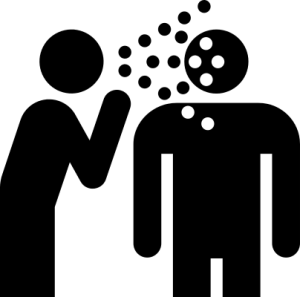 Darwinism has always been bedeviled by same sex attraction. Evidence indicates that this trait is genetically rooted. Yet, if same sex attraction remains eternally common, how can it still resist being expunged by natural selection? Few traits can be regarded as more likely to govern reproductive frequency than same sex attraction. However, it is certainly known that this trait is widely distributed in the animal kingdom exhibited by mammals, fish, lizards, birds and insects. For humans, Richard Dawkins struggles to make sense of this within Darwinism. He offers three potential answers.
Darwinism has always been bedeviled by same sex attraction. Evidence indicates that this trait is genetically rooted. Yet, if same sex attraction remains eternally common, how can it still resist being expunged by natural selection? Few traits can be regarded as more likely to govern reproductive frequency than same sex attraction. However, it is certainly known that this trait is widely distributed in the animal kingdom exhibited by mammals, fish, lizards, birds and insects. For humans, Richard Dawkins struggles to make sense of this within Darwinism. He offers three potential answers.
The ‘gay uncle’ theory
He proposes that a homosexual male in a hunter-gather society would be
preferentially entrusted to watch over the children of non-homosexual men. That
individual would then have protected and nurtured children any of whom might have
had a genetic predisposition to same sex attraction. In this manner, the genetic trait is
shielded and passed on. However, if the homosexual male is not himself reproducing in
this theory, the trait clearly still yields a selective disadvantage for homosexual
individuals.
The ‘lull the suspicions’ theory
In this instance, the homosexual male was entrusted by heterosexual men to be
a safe choice to stay home with women while the dominant heterosexual males went
off to hunt or fight. So according to Dawkins, this is a stealthy ploy whereby
homosexual or bisexual men gain surreptitious sexual access to women, mate with
them and pass on their genes. Not only is this fanciful on any thoughtful consideration,
but also makes the larger unfounded assumption that homosexual men are conditionally
attracted to women and further, are innately less aggressive than heterosexual men and
thereby less ‘manly’. Further, it makes the unwarranted assumption that bisexuality and
homosexuality are in some manner necessarily united.
The ‘social construct’ theory
Dawkins proposes that a ‘gay’ gene expresses itself differently under different
social circumstances. For example, a gay gene might be more expressed in urban than
rural environments. So, in accordance with this theory, the expression of same sex
tendency relates to social construct and environmental factors. Although it is clear that
epigenetic factors do definitively matter in evolution, a study from Vietnam in 2008
compared the differences in prevalence and practices of homosexual men in urban and
rural areas. This study concluded that there was a measurable difference in the
frequency of same sex intercourse but no change in the number of individuals engaged
in that activity. There is therefore no objective evidence to support this theory. Indeed,
if someone were inclined to agree, then inadvertent justification would be lent to those
who feel that same sex attraction can be mediated by intervention. Certainly, it would
be supposed that this is the opposite of Dawkins’ intent.
Instead, it would be reasonable to look elsewhere beyond natural selection theory to
explain same sex attraction. This is an exact power of hologenomic evolution theory. In
the hologenome, same sex attraction is assumed to be a conserved core process just as
many others are known to be. In the cellular world from which we are all descended,
asexual reproduction is commonplace. Some animals are unisexual. For example, all
rotifers are female, and there are other examples in the animal kingdom of unisexual
reproduction. So within hologenomic evolution theory, the continued incidence of same
sex attraction is simply an example of the dominant cellular imperative to preserve
what has always occurred. A trait exhibited as an essential element of our cellular
ancestors is brought forward through time and exhibits its effects within organisms as
they are eventually constituted. This is a scientifically realistic mechanism to explain
the persistence of same sex attraction. None of Dawkins’ theories based on natural
selection plausibly do so.
 The Microcosm Within | Modern Theory of Evolution |
The Microcosm Within | Modern Theory of Evolution |
